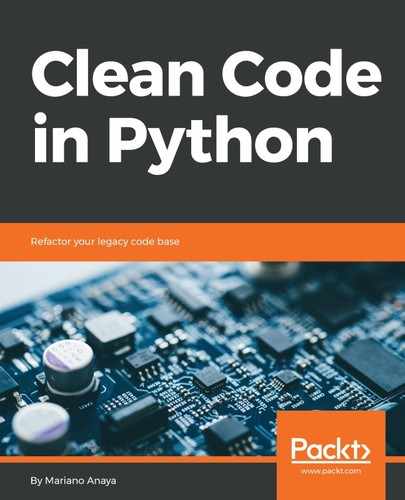On Unix development environments, the most common way of working is through makefiles. Makefiles are powerful tools that let us configure commands to be run in the project, mostly for compiling, running, and so on. Besides this, we can use a makefile in the root of our project, with some commands configured to run checks of the formatting and conventions on the code, automatically.
A good approach for this would be to have targets for the tests, and each particular test, and then have another one that will run altogether. For example:
typehint:
mypy src/ tests/
test:
pytest tests/
lint:
pylint src/ tests/
checklist: lint typehint test
.PHONY: typehint test lint checklist
Here, the command we should run (both in our development machines and in the continuous integration environment builds) is the following:
make checklist
This will run everything in the following steps:
- It will first check the compliance with the coding guideline (PEP-8, for instance)
- Then it will check for the use of types on the code
- Finally, it will run the tests
If any of these steps fail, consider the entire process a failure.
Besides configuring these checks automatically in the build, it is also a good idea if the team adopts a convention and an automatic approach for structuring the code. Tools such as Black (https://github.com/ambv/black) automatically format the code. There are many tools that will edit the code automatically, but the interesting thing about Black is that it does so in a unique form. It's opinionated and deterministic, so the code will always end up arranged in the same way.
For example, Black strings will always be double-quotes, and the order of the parameters will always follow the same structure. This might sound rigid, but it's the only way to ensure the differences in the code are minimal. If the code always respects the same structure, changes in the code will only show up in pull requests with the actual changes that were made, and no extra cosmetic modifications. It's more restrictive than PEP-8, but it's also convenient because, by formatting the code directly through a tool, we don't have to actually worry about that, and we can focus on the crux of the problem at hand.
At the time of writing this book, the only thing that can be configured is the length of the lines. Everything else is corrected by the criteria of the project.
The following code is PEP-8 correct, but it doesn't follow the conventions of black:
def my_function(name):
"""
>>> my_function('black')
'received Black'
"""
return 'received {0}'.format(name.title())
Now, we can run the following command to format the file:
black -l 79 *.py
Now, we can see what the tool has written:
def my_function(name):
"""
>>> my_function('black')
'received Black'
"""
return "received {0}".format(name.title())
On more complex code, a lot more would have changed (trailing commas, and more), but the idea can be seen clearly. Again, it's opinionated, but it's also a good idea to have a tool that takes care of details for us. It's also something that the Golang community learned a long time ago, to the point that there is a standard tool library, got fmt, that automatically formats the code according to the conventions of the language. It's good that Python has something like this now.
These tools (Black, Pylint, Mypy, and many more) can be integrated with the editor or IDE of your choice to make things even easier. It's a good investment to configure your editor to make these kinds of modifications either when saving the file or through a shortcut.
